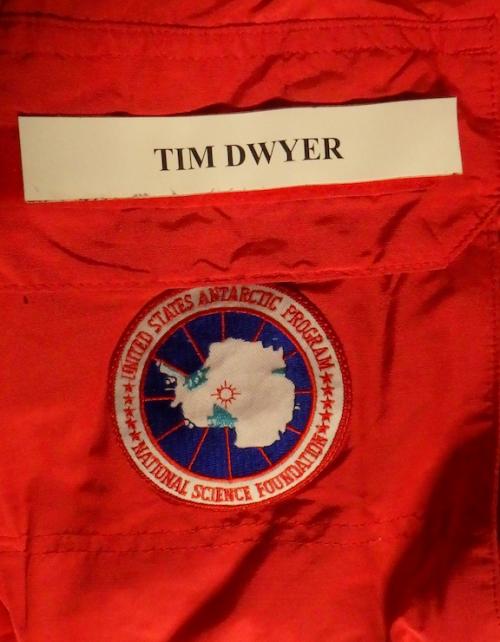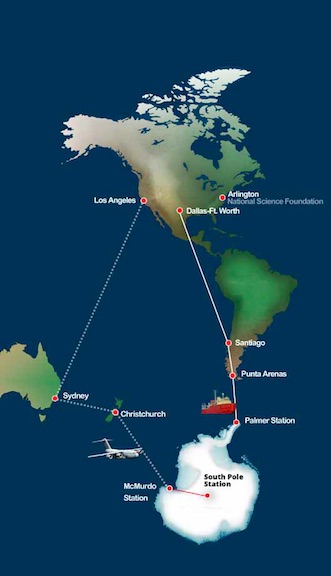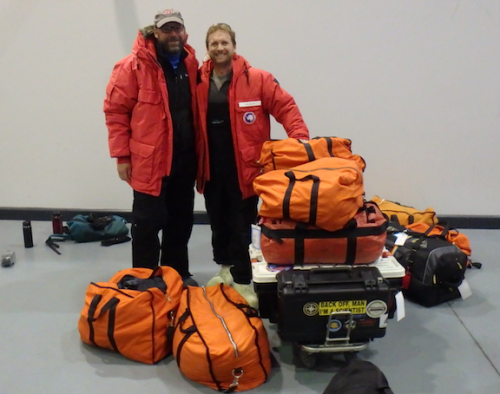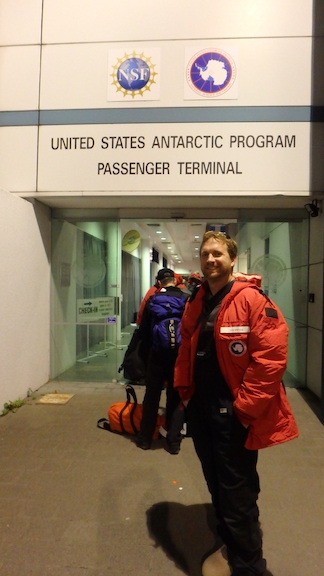 The insignia of the US Antarctic Program proudly worn by one participant.
The insignia of the US Antarctic Program proudly worn by one participant.
Antarctica is an entire continent set aside for the peaceful pursuit of science by way of an international treaty that is currently signed by over fifty nations. It belongs to no nation; it's wildlife and resources are preserved in the name of future generations of all nations. While treaty signatory nations operate dozens of separate research stations on the continent, no one lives there permanently and no one is actually "from" the Antarctica. So how do people actually get to Antarctica? For the team of researchers I'm accompanying to "The Ice," it's a lot more complicated than simply buying a plane ticket.
 Personnel deployment routes to US Antarctic Program bases. Graphic courtesy USAP.
Personnel deployment routes to US Antarctic Program bases. Graphic courtesy USAP.
The US base at McMurdo Station where I'm spending the next nine weeks, is one of three stations operated by the US Antarctic Program (USAP, pronounced You-sap). They are a government organization funded by the National Science Foundation (NSF), the division of the federal government that funds much of the basic science that goes on in university laboratories around the US. They pay for the researchers' equipment, transportation, and labor in Antarctica, and also organize all of the people, materials, and gear that allows the scientists to work safely in such a harsh environment. NSF is responsible for the supply lines running back to the US, which includes transporting personnel.
 Fellow PolarTREC teacher David Thesenga and I show off our Extreme Cold Weather (ECW) gear at the USAP Clothing Distribution Center.
Fellow PolarTREC teacher David Thesenga and I show off our Extreme Cold Weather (ECW) gear at the USAP Clothing Distribution Center.
To get to The Ice, my expedition is taking me from my home in the San Juan Islands in Washington State, to Seattle, Los Angeles, Sydney (Australia), and finally Christchurch (New Zealand), where NSF has a supply base. My trip to Christchurch takes about forty hours on commercial airlines and in airports. If I wasn't already an approved participant in the USAP, I couldn't go any further because there are no commercial airlines that fly to Antarctica. To ensure the safety of all of it's participants in such a harsh environment, the USAP organizes a lot of training and provides a full kit of specialized Extreme Cold Weather (ECW) gear before organizing transportation for the final five hour flight to Antarctica. Via military airlift.
 Just like a small airport, the USAP maintains a passenger terminal complete with passport check (to ensure being allowed back to NZ) and baggage screening.
Just like a small airport, the USAP maintains a passenger terminal complete with passport check (to ensure being allowed back to NZ) and baggage screening.
